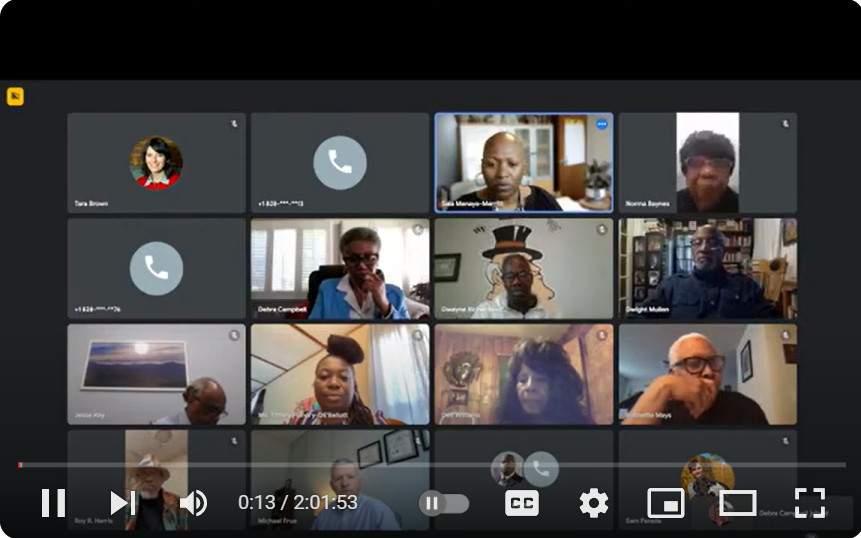
Asheville – Buncombe County Commissioner Al Whitesides chastised them for doing injustice to the community they claimed to represent and all those who sacrificed so much to abolish slavery and segregation. That was before both Asheville City Council and the county commissioners denied requests to extend the life of the Community Reparations Commission (CRC) by another eight months. Now, after two years of meetings, the CRC has approved its first tranche of project recommendations.
The proposals are typical government fare in many respects. They name problems with wide appeal, propose projects in sparkle-speak, and forecast glorious, 100% outcomes. One difference between this and engineering is that engineers define problems, assess their extent (how many people are affected, how much they lost, etc.), and then draft plans for what the solution could look like. The paper trail includes things like specced-out blueprints and bills of lading. The plans must be tested for, among other things, financial and technological feasibility.
The CRC proposals don’t even guestimate costs for the guaranteed income pilot program. They did, however, report that, in 2022, there were 19,735 Black people living in Buncombe County, but the number was trending downward. The median salary for black households was $22,312. According to Just Economics, the living wage for Buncombe County is now $22.10. Assuming a 40-hour week with two weeks off, that would equate to $44,200 a year. An assumed Gaussian distribution of wages would leave an average gap of $21,888. Dividing the Black population by an approximate average family size of 2.5 and multiplying leaves an estimated budget of $172.8 million for the first year.
This totally ignores the weightier cost of sending able-bodied adults the message that “you can’t make it on your own.”
County Attorney Michael Frue told the group that there would be challenges in implementing the program, the least of which might be that the county’s current general fund budget was set at $423.5 million. If the Local Government Commission didn’t have anything to say about a 50% tax increase (to cover disbursements plus administration, and assuming no exemptions for people of color), the county would have little defense against lawsuits charging unconstitutional differential tax rates based on skin color. Unfortunately, targeted discrimination has always been part of legislation; leaders just find another set of legal criteria that fit the group in question.
The CRC document leads the reader to believe that 100 other cities, including Durham, NC, have implemented this type of program. The provided examples of this recommendation “in practice,” however, are only aspirational or limited to very few beneficiaries, like programs helping ex-convicts of any persuasion get back on their feet. The CRC has since decided to work with a new, fundraising nonprofit for this program.
A second proposal was to give at least $250,000 to each legacy (i.e., historically Black) neighborhood and public housing community. Listed examples of appropriate expenditures include life skills training and skill-building for careers in real estate, construction, and legal services; a community technological center with a recording studio, computer lab, media lab, workshop, and makerspace; and a greenhouse and greenspaces. The Housing Authority of the City of Asheville oversees ten developments, and there are at least as many legacy neighborhoods in Asheville alone, bringing a conservative estimate of this project’s costs to $5 million a year plus overhead.
A more mainstream proposal was to create an economic development hub and Black business corridors. Elements of this plan include creating a business incubator with job training and financial literacy courses. More difficult would be the creation of “a financial institution that is designed for and led by Black residents of Asheville and Buncombe County.” The business corridors would provide employment opportunities within walking distance of neighborhoods. It is proposed that the incubator and corridors be built on lands condemned in the name of urban renewal.
The fourth and final proposal in the first tranche was to create the Reparations Accountability Council. This would carry on the work of the CRC after its official shutdown. The new body would consist of a board of five and “articulate the intent of structural and systemic recommendations, ensure fidelity in the implementation of the CRC recommendations, monitor the progress and effect of CRC recommendations, and ensure city/county compliance with the reparations resolution that each adopted.”
Missing from the first tranche were traditional government responsibilities that, apparently, aren’t being met, like street and sidewalk maintenance, competitive schools, police and fire protection, and public health. More importantly, job one for government is to ensure equal opportunity and equal justice for all.

